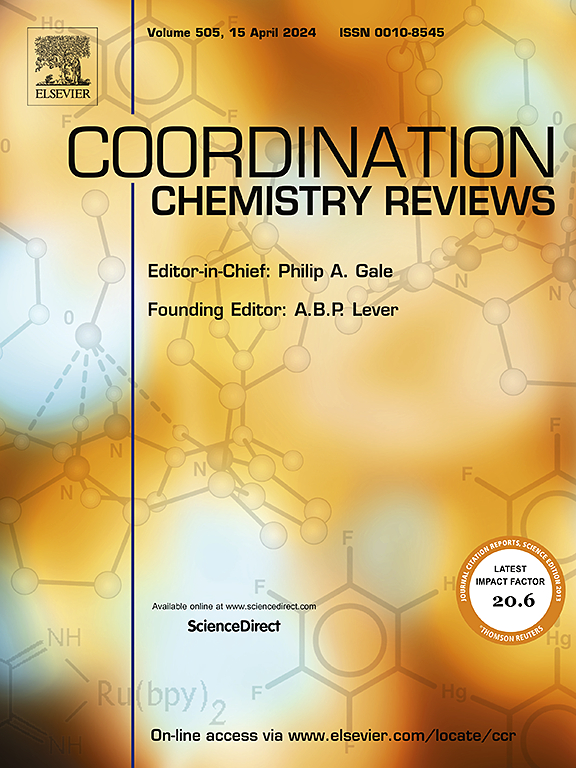Open hollow metal-organic frameworks: Synthesis strategies, applications and challenges
IF 20.3
1区 化学
Q1 CHEMISTRY, INORGANIC & NUCLEAR
引用次数: 0
Abstract
Open hollow metal-organic frameworks (MOFs) represent an emerging class of porous materials featured by interconnected voids, accessible pore channels, and surface openings. These architectures combine the advantages of traditional hollow structures (e.g., enhanced mass transfer, high surface-to-volume ratios) with the dynamic functionality of open frameworks, enabling unprecedented control over guest molecule diffusion and active site exposure. This review summarizes recent advances in synthetic strategies for open hollow MOFs, including hard/soft templating, self-templating, Marangoni effect-driven crystallization, competitive coordination, and selective chemical etching. Furthermore, we review the cutting-edge applications of open hollow MOFs-based materials in gas separation, pollutant adsorption, catalysis, and electrochemical energy storage. Finally, we outline future directions for rational design and large-scale production, addressing current limitations in robustness and application-specific optimization. This work provides a comprehensive reference for developing next-generation open hollow MOFs with tailored functionalities.
开放式中空金属有机骨架:合成策略、应用和挑战
开放式空心金属有机框架(mof)代表了一类新兴的多孔材料,其特点是相互连接的空隙,可访问的孔隙通道和表面开口。这些结构结合了传统中空结构的优点(例如,增强的传质,高表面体积比)和开放框架的动态功能,能够前所未有地控制客体分子扩散和活性位点暴露。本文综述了近年来开放空心mof的合成策略,包括硬/软模板法、自模板法、Marangoni效应驱动结晶法、竞争配位法和选择性化学蚀刻法。综述了开放式空心mofs基材料在气体分离、污染物吸附、催化和电化学储能等方面的最新应用。最后,我们概述了合理设计和大规模生产的未来方向,解决了当前在鲁棒性和特定应用优化方面的限制。这项工作为开发具有定制功能的下一代开放式空心mof提供了全面的参考。
本文章由计算机程序翻译,如有差异,请以英文原文为准。
求助全文
约1分钟内获得全文
求助全文
来源期刊

Coordination Chemistry Reviews
化学-无机化学与核化学
CiteScore
34.30
自引率
5.30%
发文量
457
审稿时长
54 days
期刊介绍:
Coordination Chemistry Reviews offers rapid publication of review articles on current and significant topics in coordination chemistry, encompassing organometallic, supramolecular, theoretical, and bioinorganic chemistry. It also covers catalysis, materials chemistry, and metal-organic frameworks from a coordination chemistry perspective. Reviews summarize recent developments or discuss specific techniques, welcoming contributions from both established and emerging researchers.
The journal releases special issues on timely subjects, including those featuring contributions from specific regions or conferences. Occasional full-length book articles are also featured. Additionally, special volumes cover annual reviews of main group chemistry, transition metal group chemistry, and organometallic chemistry. These comprehensive reviews are vital resources for those engaged in coordination chemistry, further establishing Coordination Chemistry Reviews as a hub for insightful surveys in inorganic and physical inorganic chemistry.
 求助内容:
求助内容: 应助结果提醒方式:
应助结果提醒方式:


